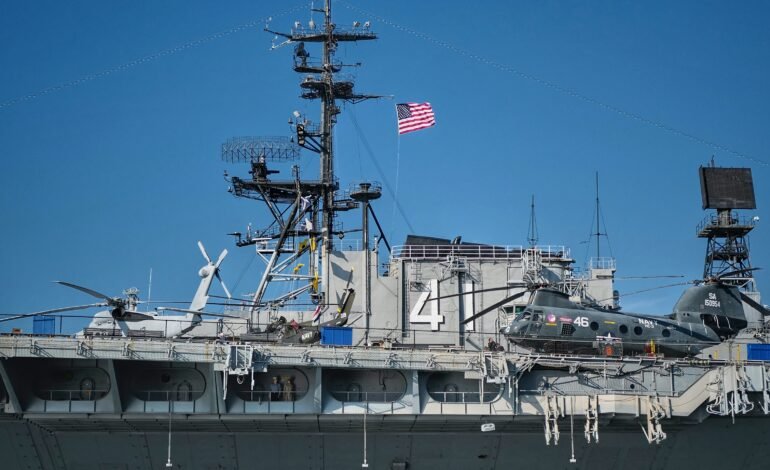Photo of Sung Jin Cho in Unsplash
The United States government has deployed three Arleigh Burke-class guided-missile destroyers off the coast of Venezuela: the USS Gravely, the USS Jason Dunham, and the USS Sampson. They are expected to be within a few miles of Venezuelan territory within the next 36 hours.
These ships are part of one of the largest military mobilizations in the Caribbean since 1989, when Washington invaded Panama to overthrow Manuel Noriega.
According to military sources, the official mission is to intensify the fight against drug cartels that use maritime routes in the Caribbean to traffic drugs to North America. The operation also includes P-8 Poseidon surveillance aircraft, an attack submarine, and approximately 4,000 Navy and Marine Corps personnel.
Who is the mission aimed at?
Although the Pentagon insists the operation is targeting "transnational threats," diplomatic sources point out that the deployment increases pressure on Nicolás Maduro's regime, which Washington accuses of protecting the Cartel of the Suns and collaborating with criminal organizations such as the Tren de Aragua and the Sinaloa Cartel.
The U.S. Department of Justice is currently offering a $50 million reward for information leading to the capture of the Venezuelan president.
Venezuela responds with militias
From Caracas, Nicolás Maduro described the movement as an "imperial provocation" and announced the activation of 4.5 million militia members across the country.
"We are prepared to defend the seas, skies, and lands of Venezuela," the president stated during a military ceremony broadcast nationally.
The influential Chavista leader Diosdado Cabello was even more emphatic: "If they dare to touch even an inch of our sovereignty, they will receive the most forceful response they could ever imagine."
Regional repercussions
The deployment has raised concerns in Latin America and the Caribbean. Analysts warn that the presence of U.S. warships so close to the Venezuelan coast could escalate into maritime or air incidents.
Countries such as Colombia and Guyana, which have border disputes with Venezuela, are closely monitoring the situation. In the case of Cuba and Nicaragua, governments allied with Maduro have condemned the operation and expressed support for the Chavista regime.
The political background
The naval movement comes at a time of renewed confrontation between Caracas and Washington. Added to Venezuela's internal economic crisis, marked by inflation and mass migration, is the U.S. accusation that Venezuela has become a platform for regional drug trafficking.
Washington had already imposed economic sanctions against Venezuelan oil and financial restrictions on Chavista officials. This new military deployment reinforces the idea that the White House is seeking to further isolate and weaken the Maduro government.
The memory of 1989
Many observers compare this operation to the 1989 operation in Panama, when the U.S. sent troops and ships to capture Manuel Noriega on drug trafficking charges. Although the current context is different, some analysts believe Washington could be sending a similar message: Maduro is not untouchable.
The situation increases uncertainty in the region. On the one hand, Venezuela faces the most serious military pressure in years; on the other, the United States risks being accused of interventionism.
The possibility of a direct clash seems remote, but the militarization of the Caribbean opens up a scenario of prolonged tension that could affect not only Venezuela but also the trade and stability of neighboring countries.
For more stories like this, follow More Latin.
Sources:

